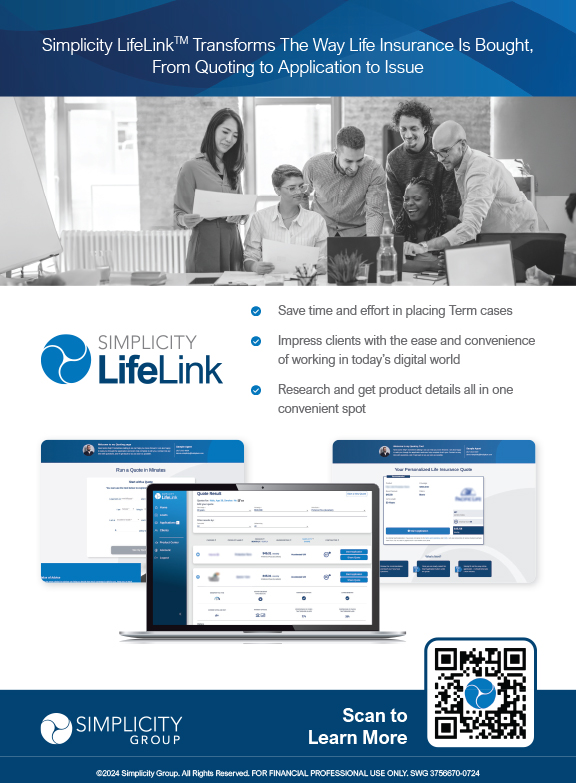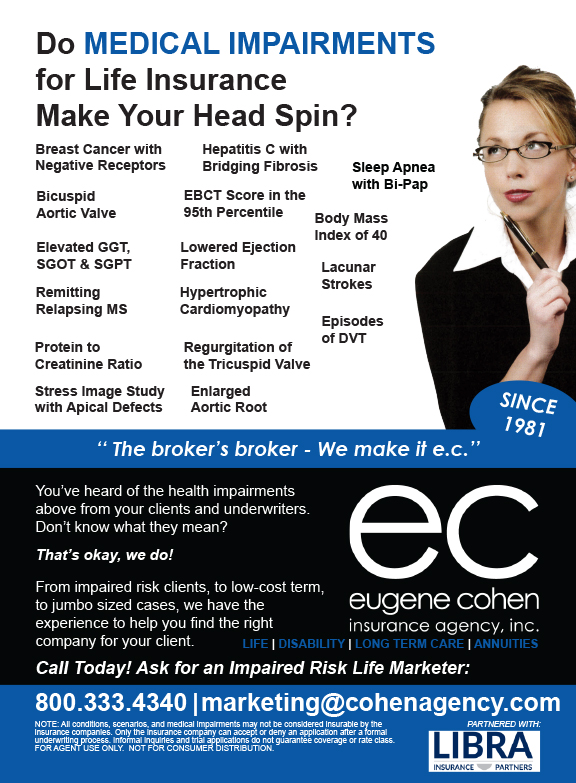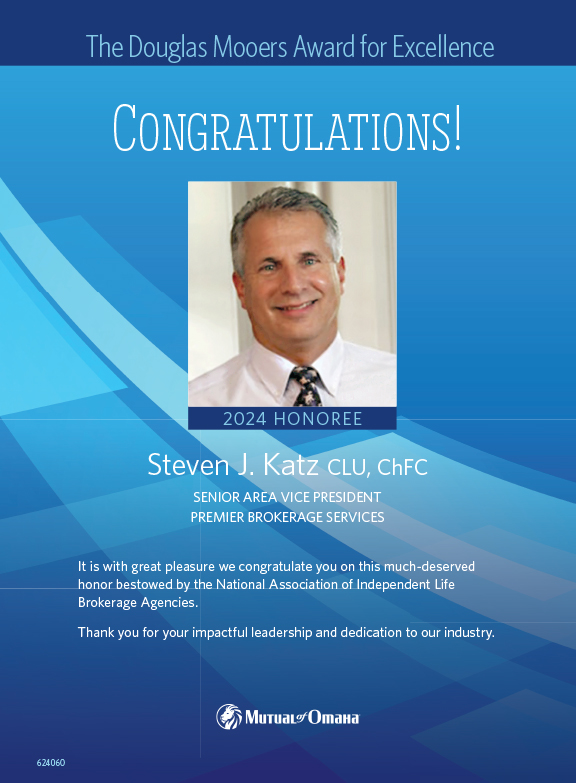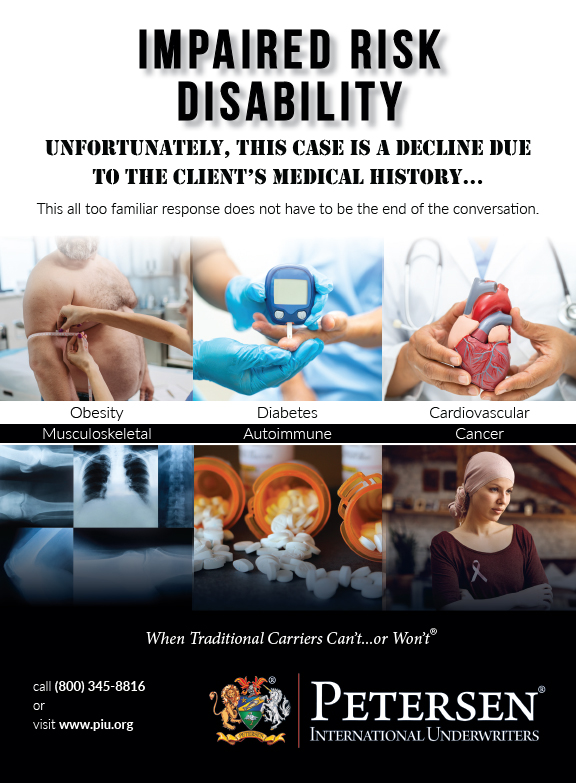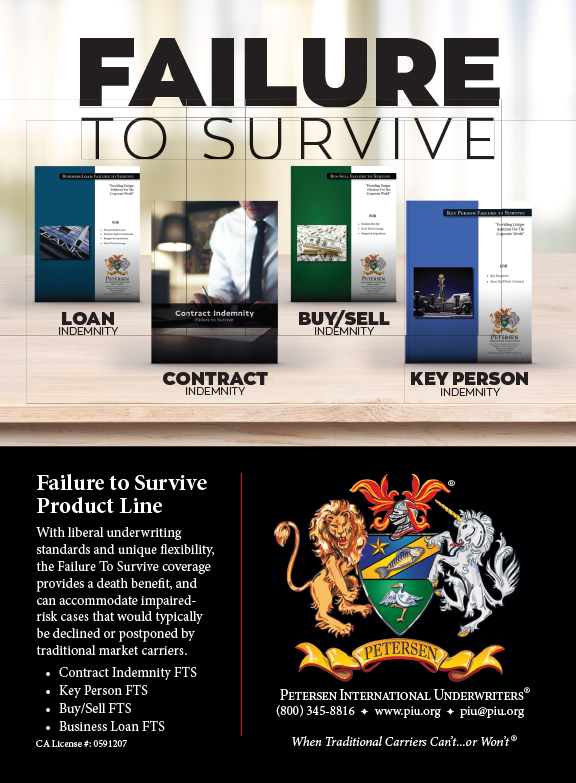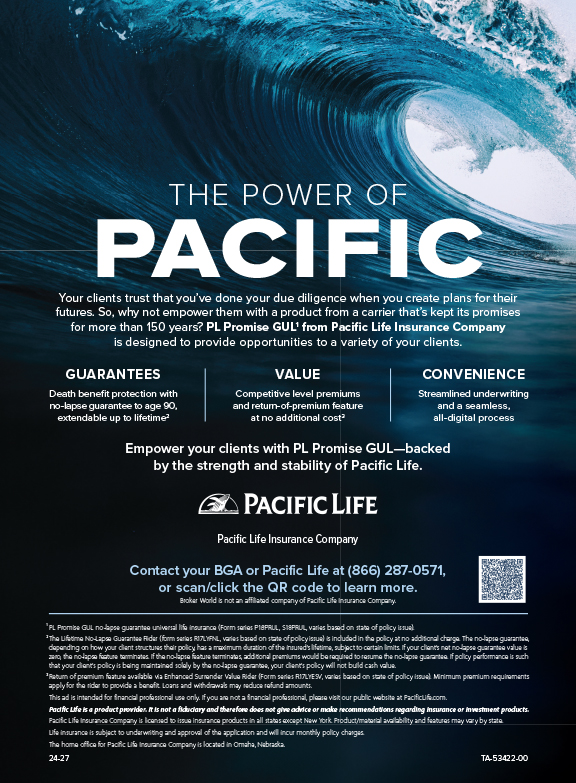As the Insured Retirement Institute (IRI) reported recently, the percentage of baby boomers who are confident of having sufficient money to live comfortably throughout retirement fell from 37 percent in 2011 to 33 percent last year.1 It saddens me deeply to know that two-thirds of people in the same age group as many life insurance brokers today don’t expect to have enough money to enjoy what should be their golden years.
We all know protection is important for clients. Protection is a core commitment as a broker: to help clients understand potential best choices for safeguarding themselves, their families and their legacies. Protection manifests in diverse configurations, and one of the solutions I’m most revved up about is life insurance that consumers don’t have to die to use.
I’m referring to a customized, hybrid life insurance solution designed to protect clients if they die prematurely, become chronically ill or outlive their retirement income. The ability to use life insurance funds for virtually any reason while living in retirement (after age 85) is one that may be a great boon for clients. In my view, it puts the life back in life insurance.
First, the challenges clients may face: According to projections by the U.S. Census Bureau,2 the number of Americans age 65 and older will exceed 92 million in 2060—more than double the population age 65-plus in 2012. The older population is projected to represent more than one in five U.S. residents by December 31, 2060, rising from one in seven in 2012. And the number of the “oldest old”—persons age 85 and older—is forecast to surge by more than threefold, from 5.9 million to 18.2 million, reaching 4.3 percent of the total population.
As a broker, you likely know all too well the future scenarios that long-lived clients may have to contend with: potentially outliving their retirement streams and having health care and related expenses that devastate their nest eggs.
Second, clients need customized solutions: While clients want protection, experience probably reminds you that few want to be locked in to something they are unable to change if life calls for a different course. They want options, including the flexibility to respond to life’s ups and downs promptly and with agility.
Third, most Americans are not fully educated on life insurance: According to LIMRA, nearly 70 percent of consumers say their living expenses are keeping them from buying life insurance, or more of it.3 Based on the organization’s research, as well as anecdotal evidence, I believe misconceptions about the cost of life insurance are standing in the way of protection. Another misunderstanding I’ve heard is that “you have to die to use it.” That simply isn’t true anymore.
Clearly, clients and prospects face uncertainties tied to their retirement needs, want flexibility as to when and how they respond, and may not realize that newer life insurance solutions might be an appropriate fit.
A solution customized for clients: Today it is possible to review with consumers a bundle of two riders on a life insurance product—a solution created specifically in response to clients who may confront the scenario described above. It’s a duo of a chronic illness accelerated access rider and a longevity income rider that’s available on a universal life insurance product—resulting in an innovative, flexible and powerful design.
A multipurpose solution such as this is intended to provide life insurance with lasting guarantees and protection, enabling policyholders to accelerate all or some of the death benefit to meet chronic illness needs (when applicable health criteria of the rider are satisfied) or retirement income needs. Also, clients can choose to refrain from activating either rider, and instead preserve the full death benefit. Keep in mind that a policy withdrawal or loan, while holding the potential to help consumers when they need help the most, will reduce the death benefit.
Living benefit riders have been available for some time, of course, but it has not been common to see a longevity rider and a chronic illness accelerated benefit rider packaged together for a life insurance product.
Details: Chronic Illness
Nearly one-fourth of all Americans and two-thirds of older Americans have more than one chronic condition.4 Consumers who plan ahead with their brokers’ help, however, have the potential to benefit from a life insurance policy that’s bundled with a chronic illness accelerated benefit rider. As a reminder, chronic illness typically is defined, for purposes of the rider, as a severe cognitive impairment or a permanent inability to perform two or more of the six activities of daily living (ADLs).
In most states, no long term care insurance (LTCI) license is needed in order to sell a chronic illness accelerated benefit rider that is classified as 101(g) under the Internal Revenue Code. Yet a hybrid product such as the one I’ve been describing here has the potential to provide living benefits—which may be income tax-free—to help cover the costs of nursing home care, assisted living or virtually any type of expense for policyholders who fulfill the health impairment criteria. In keeping with best practices, be sure to tell clients at the onset of the planning process to consult independent tax and legal advisors when considering their own circumstances.
Details: Longevity
An included longevity rider within the dual “asset protector” solution for life insurance is designed to help safeguard clients against outliving retirement income, providing the opportunity to access the death benefit after as few as 15 years (at age 85 or older). Clients can use the benefit for anything they may need.
Triple Protection
As a broker, you have the potential to help consumers change the way they think about, purchase and use life insurance. The option to leverage life insurance for protection, flexibility and control while still living may help protect clients against some of life’s most formidable financial risks—dying prematurely, becoming seriously ill or outliving retirement income. When you put the life back in life insurance with the help of living benefit riders, you might be putting the gold back in the golden years.
Footnotes:
1. “IRI State of the Industry Report Shows Marketplace Fueled by Financial Strength,” Insured Retirement Institute, Dec. 2014, accessed April 1, 2015 at www.irionline.org/newsroom/newsroom-detail-view/iri-state-of-the-industry-report-shows-market
place-fueled-by-financial-strength
2. “U.S. Census Bureau Projections Show a Slower Growing, Older, More Diverse Nation a Half Century from Now,” U.S. Census Bureau, Dec. 12, 2012, accessed April 1, 2015,
www.census.gov/newsroom/releases/archives/population/cb12-243.html
3. “Facts from LIMRA,” LIMRA, Sept. 2014, accessed April 1, 2015 at www.limra.com/uploaded
Files/limra.com/LIMRA_Root/Posts/PR/LIAM/PDF/2014-LIAM-Fact-Sheet.pdf
4. “The State of Aging and Health in America 2013,” Centers for Disease Control and Prevention, U.S. Department of Health and Human Services, 2013, accessed April 1, 2015,
www.cdc.gov/features/agingandhealth/state_of_aging_and_health_in_america_2013.pdf








